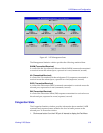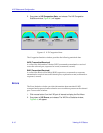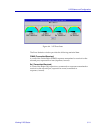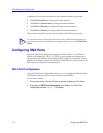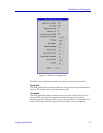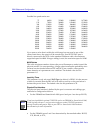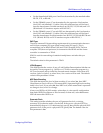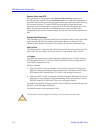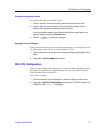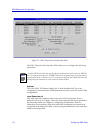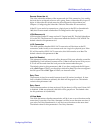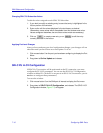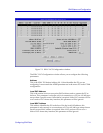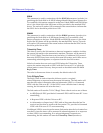
Configuring SNA Ports 7-5
SNA Status and Configuration
¥ For the SmartSwitch 1800, ports 2 and 3 are determined by the attached cables:
RS-232, V.35, or RS-449;
¥ For the FRX4000, ports 4-7 are determined by the expansion Line Interface
Card (LIC) and attached I/O cables. Only the valid interfaces will be listed
from the menu button. Possible interfaces are: RS-232, V.35, RS-449, and X.21.
(RS-449 and X.21 interfaces require an RS-422 LIC.)
¥ For the FRX6000, ports 0-7 on each RLP are determined by the Line Interface
Card (LIC) and attached I/O cables. Only the valid interfaces will be listed
from the menu button. Possible interfaces are: RS-232, V.35, RS-449, RS-530 and
X.21. (RS-449, RS-530, and X.21 interfaces require an RS-422 LIC.)
PAD Type
The most common SNA networking requirement is for communication between
an SNA host computer (PU type 4) and control units (PU type 2). This is
accomplished via an HPAD (Host PAD) and TPAD (Terminal PAD). The host
computer FEP (front end processor) is connected to the HPAD and the cluster
controller is connected to a TPAD.
XPAD is used for networking of statistical multiplexers and other bit-sync
devices.
The default value for this parameter is TPAD.
LPDA Support
This Þeld speciÞes the version, if any, of Link Problem Determination Aid that can
be used by a host program (e.g., NetView or VTAM) or controller program (e.g.,
NCP) to test status and to control the line and remote interface. Select from two
versions, lpda-1 or lpda-2; or select None, if no version will be used. The default
value for this parameter is None.
NRZ Data Encoding
This Þeld determines the level of data encoding. If you select Yes, then NRZ
(Non-Return to Zero) will be on. This means that 1 represents high-level encoding
and 0 is low-level. If you select No, then NRZ is off, which means that 1 represents
no change in level, and 0 is a change.
Always use NRZ for all SNA modes, unless there is a site-speciÞc conÞguration
that needs NRZI (Non-Return to Zero Inverted). In that case, select No because
NRZ off means that NRZI is on.
Generate Clock
This setting speciÞes whether the port will generate the clock, or timing,
necessary to synchronize trafÞc over the link. If the port is a physical DCE (as
determined by the portÕs I/O cable interface), specify Yes, since the physical DCE
generates clock. If the port is a physical DTE, specify No. The default value for
this parameter is Yes.



